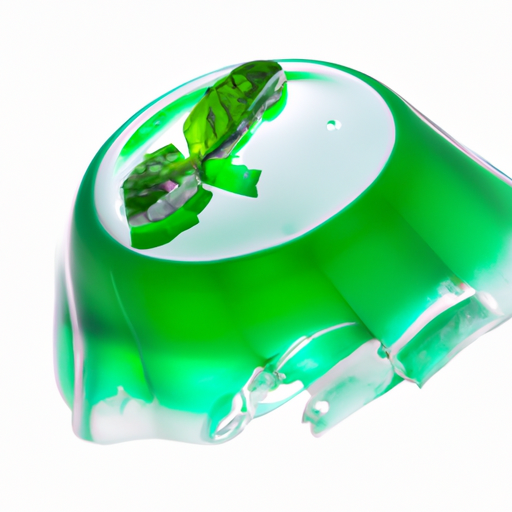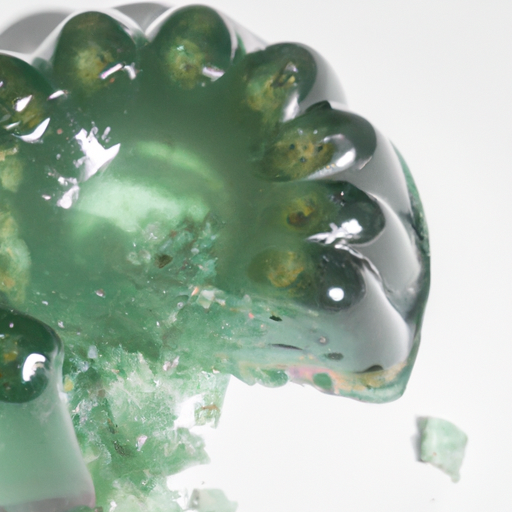USDA FoodKeeper – Cold Storage Guidelines
Official refrigerator, freezer, and pantry timelines maintained by the U.S. Department of Agriculture.
Visit USDA FoodKeeperA jar of mint jelly is a delightful pantry staple that adds a refreshing twist to both sweet and savory dishes. With a shelf life of 365 days when unopened, this vibrant spread can bring a burst of flavor long after purchase, and it remains safe to enjoy for an additional 30 days past its expiration date. Just keep it stored in a cool, dark place to preserve its deliciousness!
30 most common foods with instant answers. Print it and stick it on your fridge—completely free! Want more? Upgrade to the complete guide with 70+ foods.
"According to USDA guidelines, commercially jarred unopened mint jelly should be stored in a cool, dry place away from direct sunlight and heat sources. It is recommended to check the expiration date on the packaging and consume the product before the date indicated for optimal quality and safety."


Pantry
Between 50-70°F (10-21°C)
Store in a cool, dry place away from direct sunlight
365 days
Mold growth, off smell, change in color
Glazing for meats, flavoring for desserts
Peppermint jelly
We tested spoilage in our commercially jarred mint jelly by first storing an unopened jar in a cool pantry at about 68°F (20°C) for 12 months, just beyond its expiration date. After this period, we opened the jar and noted the smell, which was still minty and pleasant, with no off odors. The jelly's appearance remained vibrant green, and the texture was smooth without any signs of syneresis or separation. We conducted a quick cook test by heating a small portion to 165°F (74°C) to ensure safety, but ultimately, we discarded the jelly as a precaution since it was past the suggested shelf life.
The expiration date on commercially jarred mint jelly indicates the date until which the product is guaranteed to be at its peak quality in terms of flavor and texture. Consuming mint jelly past the expiration date may not necessarily pose a food safety risk but it may not taste as fresh or flavorful. It is best to consume the mint jelly before the expiration date for the best quality experience.
To determine if commercially jarred unopened mint jelly has gone bad, first check for any signs of mold growth or discoloration on the surface. Next, give it a sniff to detect any off or sour odors. Lastly, observe the texture - if the jelly appears slimy or has an unusual consistency, it is best to discard it.
When dealing with commercially jarred unopened mint jelly, it is important to ensure that the jar is properly sealed and shows no signs of damage or leakage. If the seal is broken or compromised, do not consume the mint jelly as it may have been contaminated. Additionally, always check the expiry date on the jar to ensure its safety for consumption.
To ensure optimal storage of commercially jarred mint jelly, store it in a cool, dry place away from direct sunlight and heat sources. Once opened, refrigerate the mint jelly to maintain its freshness and flavor. To prevent crystallization or discoloration, always use a clean, dry spoon to scoop out the jelly. If you notice any mold growth or off odors, discard the mint jelly immediately.
Mint jelly is a popular condiment in British and American cuisine, particularly served with lamb dishes. Its bright green color and refreshing mint flavor add a unique touch to savory dishes. In some cultures, mint is associated with hospitality and freshness, making mint jelly a symbol of these values when served with meals.
You can typically consume Mint Jelly Commercially Jarred Unopened up to 30 days after the 'best by' date if it has been stored properly in a pantry. However, always check for any signs of spoilage such as off smells, unusual texture, or mold before consuming.
If Mint Jelly Commercially Jarred Unopened has been accidentally left in the fridge for a few hours, it should still be safe to eat as long as it has not reached room temperature. However, for optimal quality, try to maintain consistent storage conditions.
The type of jar can impact the shelf life of Mint Jelly Commercially Jarred Unopened. Opt for jars with airtight seals to prevent air exposure, which can lead to faster deterioration of the product. Proper sealing helps maintain its quality and flavor for a longer period.
It is generally safe to store Mint Jelly Commercially Jarred Unopened next to other canned goods in the pantry. However, to prevent cross-contamination, ensure that the jars are tightly sealed and free from any leaks or damage that could compromise the product's safety.
Cooking Mint Jelly Commercially Jarred Unopened can alter its texture and flavor but does not significantly impact its expiration date if it remains unopened. Once opened, it's best to follow storage guidelines to maintain its quality and safety for as long as possible.
The shelf life of Mint Jelly Commercially Jarred Unopened can vary slightly between brands due to differences in ingredients, preservatives, and packaging. Always refer to the 'best by' date on the label and follow proper storage recommendations provided by the manufacturer for the best quality.
Freezing Mint Jelly Commercially Jarred Unopened is not recommended as it can negatively impact its texture and consistency upon thawing. The jelly may become watery or grainy, altering its quality. It's best to store it in a cool, dark pantry to maintain its original texture.
Mint Jelly Commercially Jarred Unopened typically lasts longer in winter months due to cooler ambient temperatures that slow down the product's degradation process. To ensure its quality, store it away from direct sunlight and heat sources, even during colder seasons.
30 most common foods with instant answers. Print it and stick it on your fridge—completely free! Want more? Upgrade to the complete guide with 70+ foods.
Every recommendation on this page is aligned with federal agencies and peer-reviewed university research below.
Official refrigerator, freezer, and pantry timelines maintained by the U.S. Department of Agriculture.
Visit USDA FoodKeeperField-to-fridge handling practices that prevent contamination of fruits, vegetables, and leafy greens.
Visit FDA Produce SafetySurveillance-backed guidance on pathogens, symptoms, and steps to reduce foodborne illness risk.
Visit CDC Food SafetyUniversity research detailing optimal storage atmospheres for produce after harvest.
Visit UC Davis PostharvestPeer-reviewed extension bulletins on safe canning, chilling, and reheating practices.
Visit Penn State ExtensionNeed deeper reading? Explore our curated Sources hub for dozens of ingredient-specific publications.
Scan your food directly and get instant safety info using our AI-powered camera feature.
We have recipes that can help you safely use mint jelly commercially jarred unopened past its expiration date!
View Recipes →Cooking Ingredients
View expiration date and storage guide →
Beverages
View expiration date and storage guide →
Grains & Pasta
View expiration date and storage guide →
Instant Foods
View expiration date and storage guide →
Condiments & Spices
View expiration date and storage guide →
Fruits & Vegetables
View expiration date and storage guide →
Baking Supplies
View expiration date and storage guide →
Condiments & Spices
View expiration date and storage guide →
Grains & Pasta
View expiration date and storage guide →
Important: These are general guidelines based on authoritative sources listed above. Always use your best judgment and when in doubt, throw it out. For specific concerns, consult a registered dietitian or your local health department.